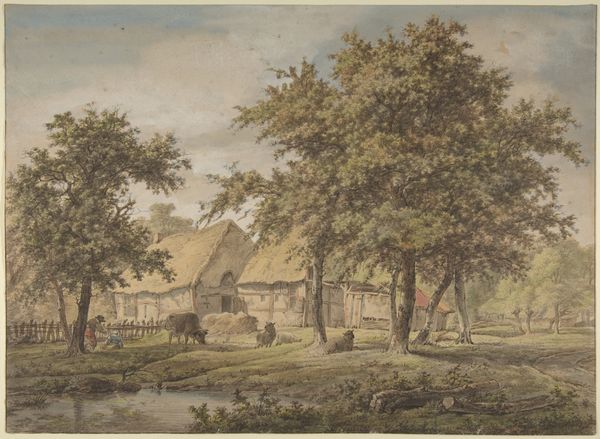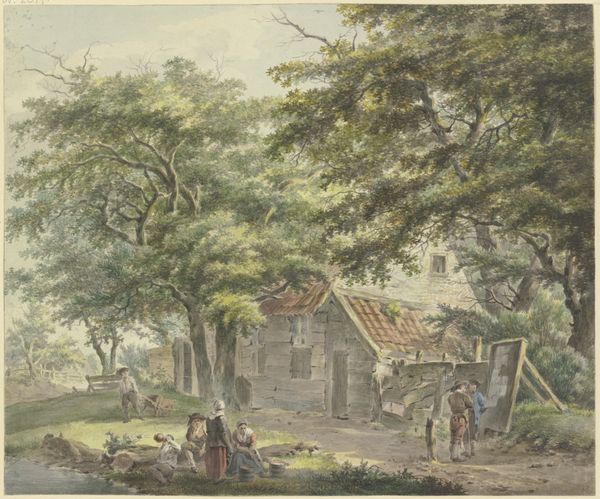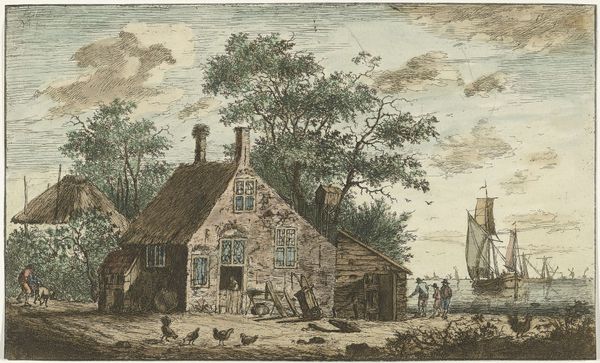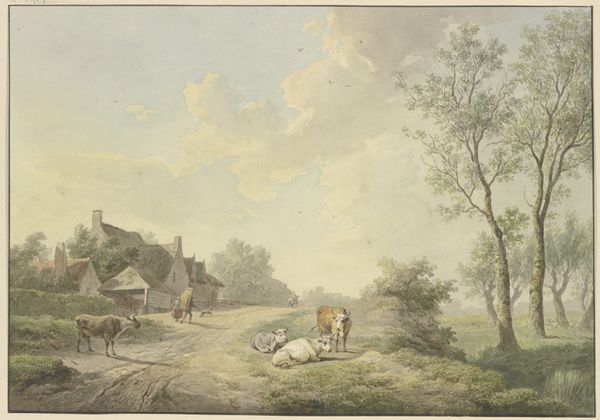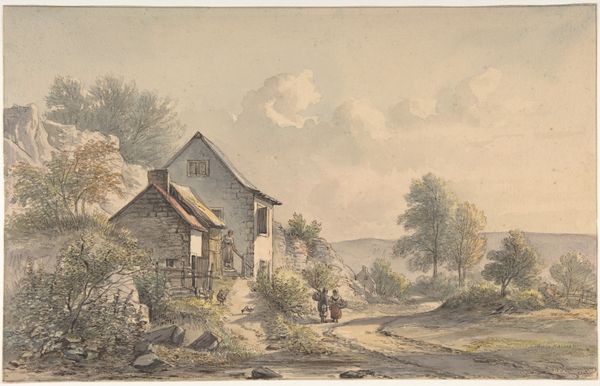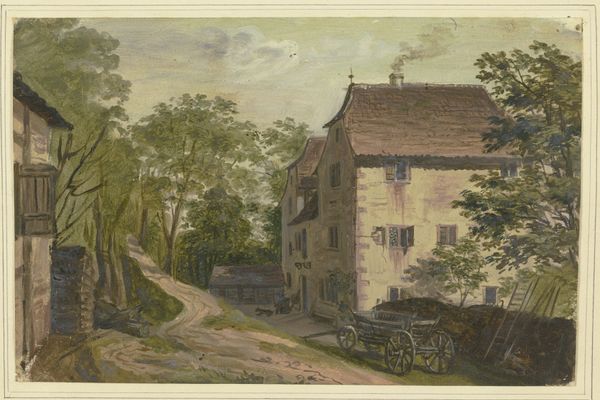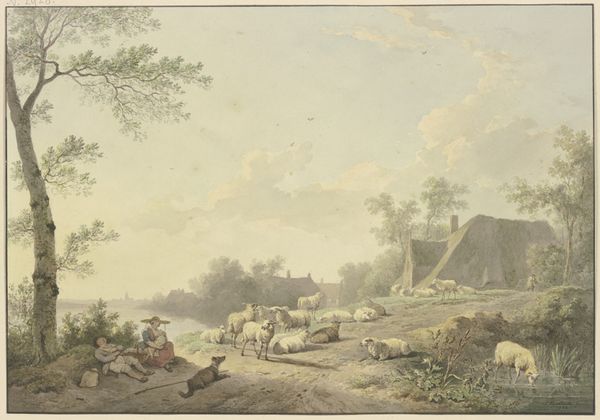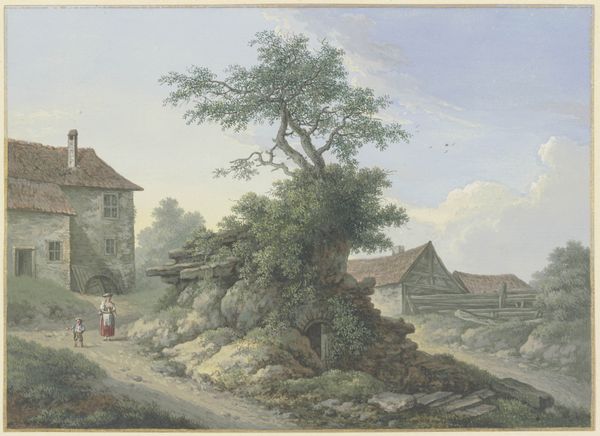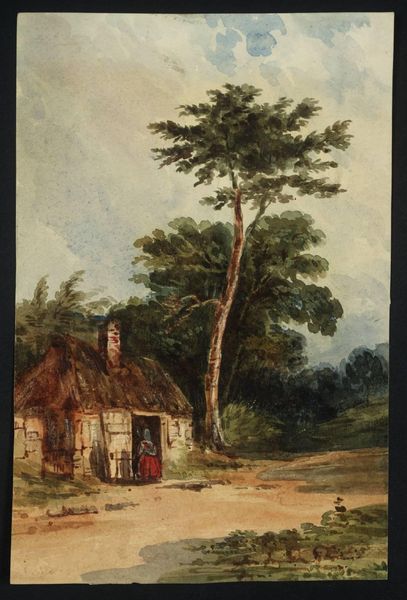
Bauernhaus am Weg, auf dem fünf Kühe und ein Reiter sind, vor dem Haus fünf Figuren und ein Hund 1803
0:00
0:00
drawing, painting, paper, watercolor, ink
#
drawing
#
painting
#
landscape
#
paper
#
watercolor
#
ink
#
coloured pencil
#
romanticism
#
genre-painting
#
watercolor
Copyright: Public Domain
Editor: This is "Bauernhaus am Weg…" which roughly translates to "Farmhouse on the Road...", created in 1803 by Abraham Teerlink. It’s a watercolor and ink drawing on paper. It feels like a quiet snapshot of rural life; so peaceful and self-contained. What stands out to you when you look at it? Curator: Quiet, yes. It whispers rather than shouts, doesn’t it? To me, this watercolor evokes a sense of nostalgia, a longing for a simpler time, though I know reality probably smelled a lot more strongly of manure back then! Notice how Teerlink balances detailed observation with an almost dreamlike haziness. It’s less about photographic accuracy and more about capturing a mood, an atmosphere. Editor: I see what you mean about the mood. It's carefully composed too, with the figures and animals arranged almost like a still life. Curator: Exactly! And there's a theatricality, isn't there? Consider the stage-like positioning of the farmhouse and its inhabitants, framed by the landscape. What do you make of the contrast between the intimate scene around the house and the expansive landscape in the background? Editor: It makes the house and its people seem even more self-contained. Almost like their whole world. It makes you wonder what their lives were like. Curator: Precisely. Teerlink invites us to imagine the narratives of these anonymous figures. To romanticize a rural simplicity that perhaps never really existed, but that’s powerful nonetheless. Art isn't always about answering questions, but often about what the work asks us to ponder. Editor: That makes me appreciate the artist's vision even more. Curator: Yes, sometimes the most seemingly simple works offer the richest food for thought.
Comments
No comments
Be the first to comment and join the conversation on the ultimate creative platform.
